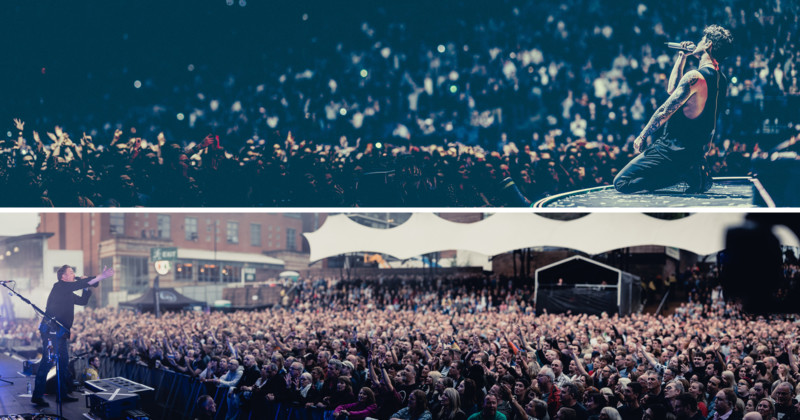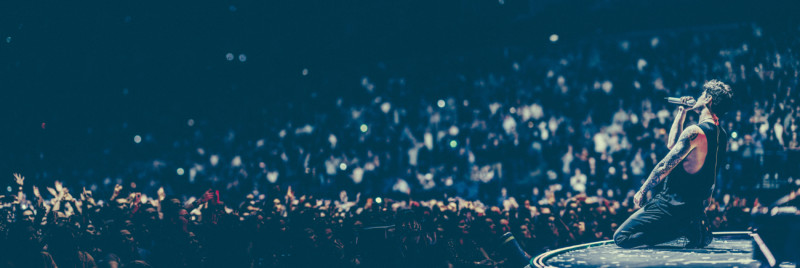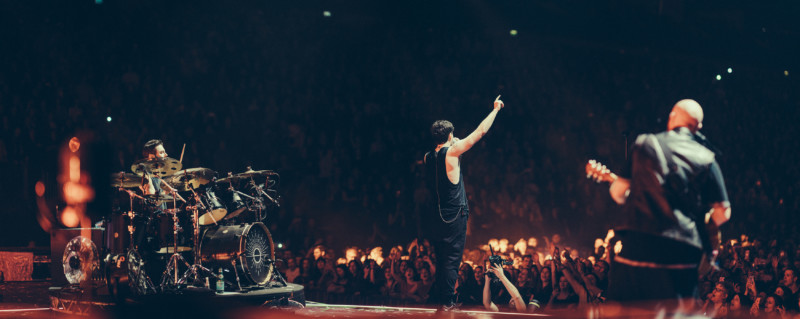
In Summer of 2019, while working with Elbow in Manchester, concert photographer Peter Neill had an idea. He decided to try and stitch an epic panorama… with a twist. Instead of using a wide-angle, he would use an 85mm f/1.4 and capture a pano of the stage and the crowd, but with a shallow depth of field.
Typically, when you set about shooting a panorama like this, you’re working with three or four shots captured at a relatively wide focal length. That makes the stitching easier, since there are fewer “seams” to deal with, but it lacks that shallow DOF look that people seem to love.
While shooting Elbow in 2019, Neill started to wonder if he could have the best of both worlds.
“While standing on one end of the stage, I wondered if I could shoot a shallow DOF panorama with my 85mm,” Neill tells PetaPixel. “I fully expected it not to work or to be impossible to stitch due to the amount of movement.”
He soon discovered that this is a fairly well-known technique called the Brenizer Method, though it hasn’t been applied to concert photography very often… if at all. As Neill mentions above, the amount of movement makes this very difficult to achieve. But, much to his delight, he’s been able to more-or-less perfect the process for his concert work.
For his creations, he shoots hand-held with on his Sony a7 III or a7R IV (he’s a Sony Ambassador) and an 85mm lens at f/1.4 or f/1.8. All photos are captured in portrait orientation, and he captures up to 30 shots per “run,” ultimately using about 10 for each panorama.
“I tend to start by getting several pictures of [the lead singer] at one side of the photo. This gives me a multiple entry point choices for the composition,” says Neill. “From there, it’s a case of keeping the feet locked on the ground and turning just with my hips, keeping my arms and hands firm.”
He tries to create about 20% overlap to make stitching easier, and uses his knowledge of the music to pick a point in the song when there’s less likely to be a lot of movement in the crowd or a major lighting change.
When it comes time to stitch the photos, he picks his favorite 10 images out of the 30-or-so he shot, and then uses Lightroom to auto stitch the panorama. Way more often than he expected, Lightroom actually gets it right on the first go, without needing further cloning from other images to fix any stitching mistakes.
The results look something like this (click for higher resolution):




After practicing this over and over since he first tried it in 2019, Neill has gotten pretty good at it.
“I’d say it takes me end to end about 10 seconds on average once I’ve chosen my focus point and settings. It’s a case of shoot, recompose, shoot, recompose, shoot… rather than a continuous movement,” he tells PetaPixel. “Of course, there are times when it just doesn’t work. Failure is very much part of the process and makes the times it does work all the more exciting!”
Check out the video up top to dive a bit deeper into the process and see how Neill created one of the shots above. And if you want to see more of Neill’s work, check out his website, give him a follow on Instagram, or become one of his first subscribers on YouTube.
Image credits: All photos by Peter Neill and used with permission.